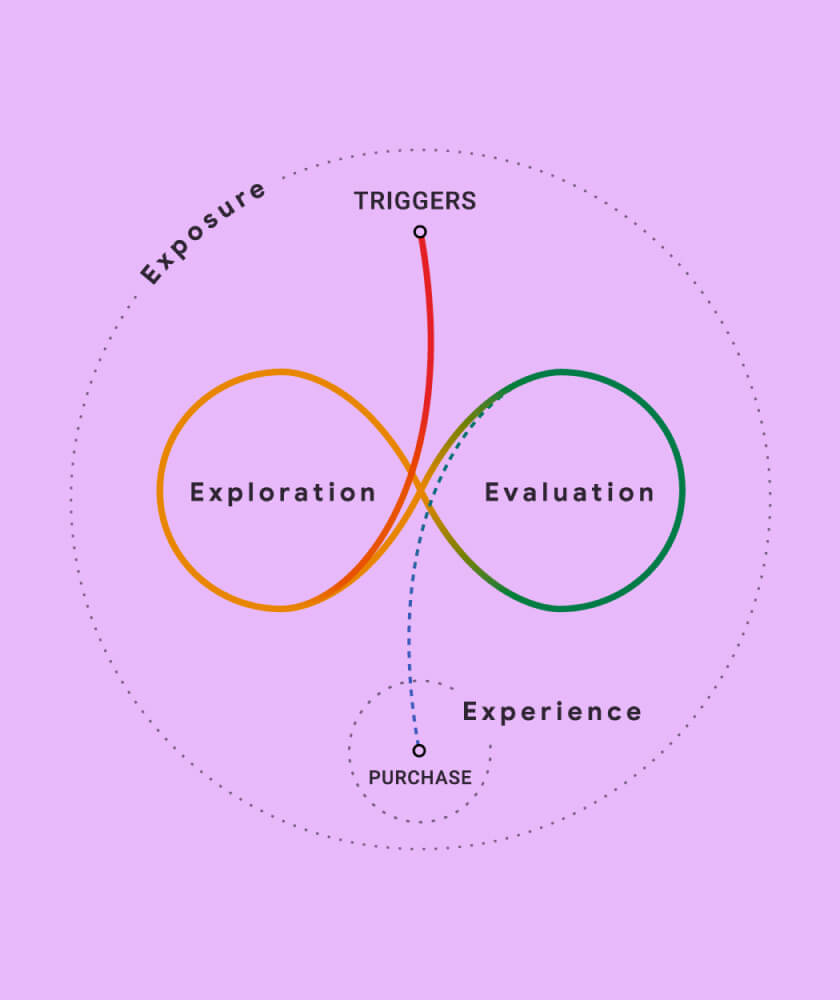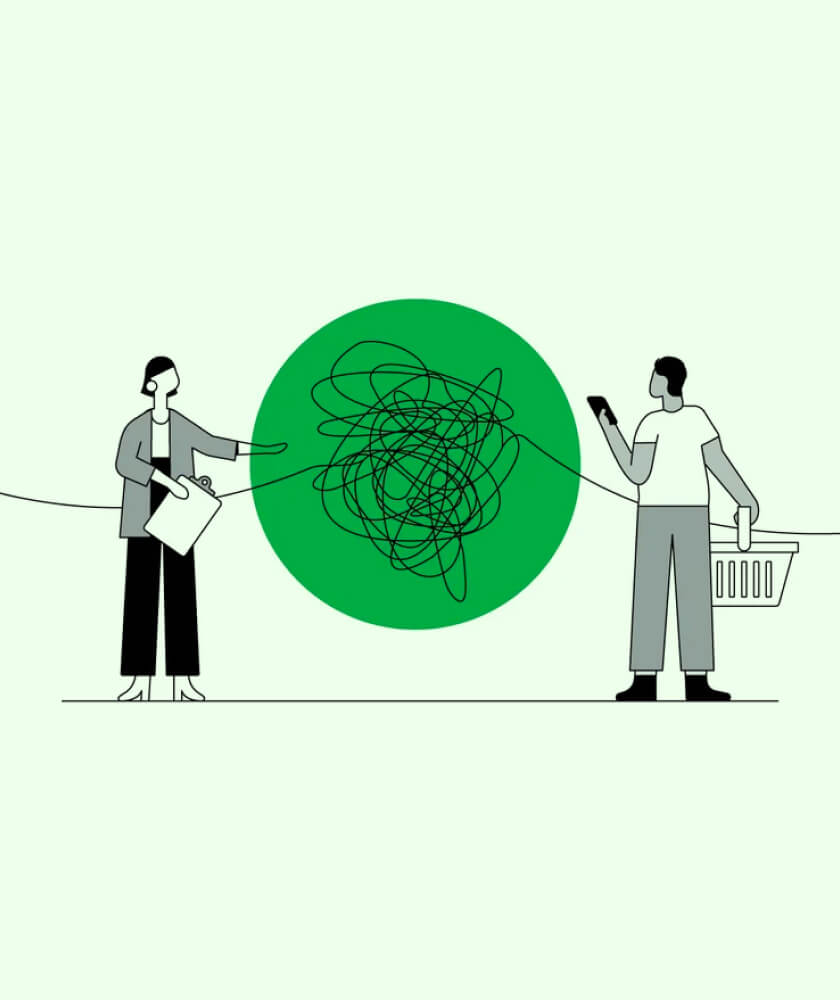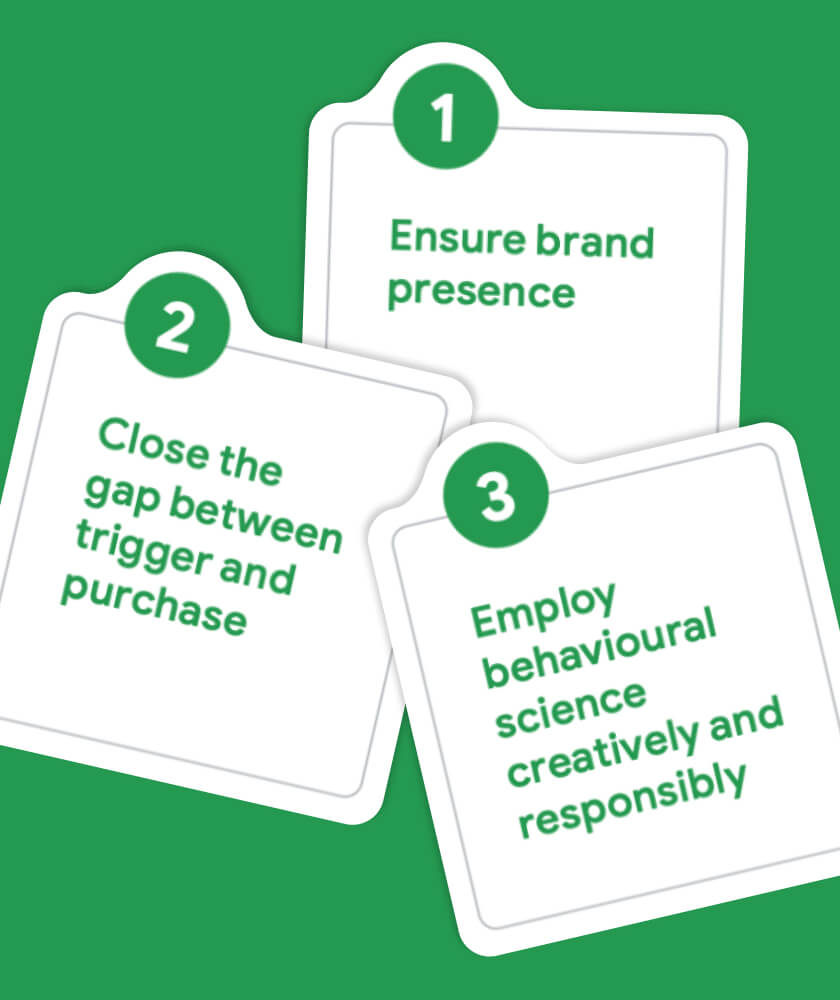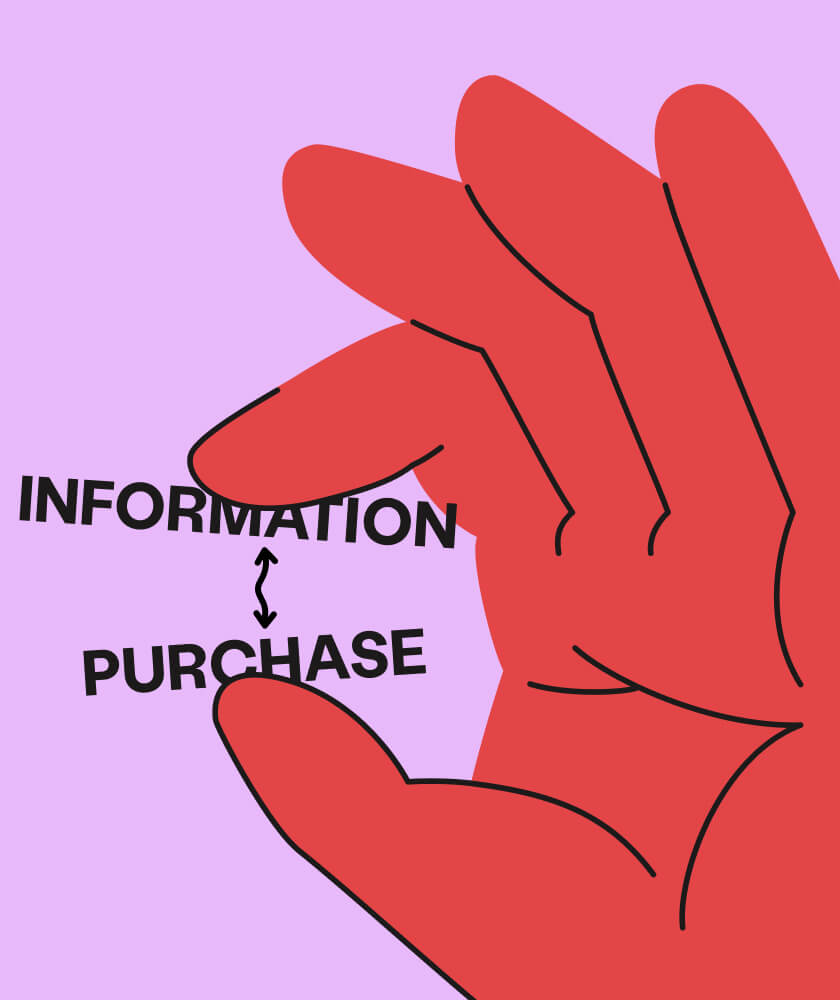Find out what has changed in the Messy Middle model and how it helps us overcome purchase indecision.

Ample choice does not automatically provide us with greater happiness. On the contrary: the inability to find the right information and the indecision that follows can prove paralyzing for the purpose of purchase.
We find ourselves moving through the "Messy Middle," what Google describes as a place where consumers have learned to navigate using a variety of cognitive shortcuts, given the abundance of information and options.
What is the Messy Middle
The Messy Middle is a marketing model that involves everything between the stage where a user gathers information about a solution and the stage where he or she decides to make a purchase.
The Messy Middle, is located in the middle of the decision cycle and is the "place" where customers are gained and lost. The concept of the "Messy Middle" is being introduced by Google in 2019 to describe the complex consumer decision-making process in the digital age. It lies between the initial awareness stage (known as the "Zero Moment of Truth," a 2011 model) and the final decision stage.
In this stage, users actively seek information, compare options and evaluate different resources available to them in an attempt to make the best purchase decision. This situation is nonlinear and may repeat itself several times before the consumer makes a final decision.

The Stages of the Messy Middle
"Decision fatigue often emerges in the evaluation mindset when buyers begin to feel weighed down and averse to having to make another decision. Indecisiveness often occurs when the buyer has almost made up his or her mind but cannot make the final decision."
(Google Report about the Messy Middle)
User purchase decision-making behavior is driven primarily by two impulses:
- Exploration: gathering information about products or services that interest him or her, often through online searches.
- Evaluation: compare the different options available and makes a purchase decision.
Greatly simplifying, our buying process follows these steps:
- We receive a research impulse (internal or external)
- We explore a topic/product/service, reading information online
- We evaluate the options available to us and purchase
The "Messy Middle" has become even more complex in recent years due to a number of factors, including:
- the availability of an increasing number of products and services, making it more difficult for consumers to make a decision
- the influence of social media, through which information and opinions about products and services are gathered
- personalization: consumers are increasingly seeking personalized experiences, which can be difficult to deliver according to the nonlinear logic of the Messy Middle
Why is the Messy Middle changing?
"In the UK, the search interest for "best" has increased over time, while the search interest for "cheap" has decreased, with the trend lines crossing in 2008. The former leader, "cheap," describes a simple and easily measured characteristic; "best," on the other hand, is nebulous and requires much more information to define. We hypothesized that the shift from one word to the other was symptomatic of the fact that the Internet has transformed from a place where people compare prices to a place where they compare everything." (Google Report about the Messy Middle)
The Messy Middle is composed of those factors that considerably influence the buying process, such as the specification of key product features, availability, reviews, etc. A decision-making process of enormous complexity compared to a few years ago and which makes it difficult for marketers to discern the influence on the final result exerted by countless touch points: search engines, review sites, social networks, forums, blogs, etc.
The "Messy Middle" is the stage at which brands can stand out from the competition. The ability to provide relevant information, answer users' questions and guide them through the decision-making stage is critical to reducing purchase indecision. It follows that understanding as much as possible about this phenomenon is crucial to figuring out how to help users identify the best solutions for their needs and possibly lead them to choose their product/service.
The new Messy Middle and the behavioral sciences
"Our research found that by enhancing search ads with with compelling behavioral science expressions, buyers in all categories switched not only from a preferred brand to their second choice, but to an invented brand that we created specifically for the experiment. For established brands, enriching advertising texts with behavioral science can protect the investment in the brand and maintain the top choice position for consumers. For competing brands, enhancing ad copy can help level the playing field and enable them to capture a greater share of clicks. [...] We found that enhancing product propositions with behavioral science was sufficient to shift preference from top brands to second-choice or completely made-up brands."
(Google Report about the Messy Middle)
Google released in September 2023 the follow-up to its 2020 study on online shopping patterns, titled "The Messy Middle of Search."
The new Google’s report about Messy Middle is the result of a behavioral science team that worked with Google to test a number of theories about how people shop online.
Behavioral sciences is an interdisciplinary field of study concerned with understanding human and animal behavior through observation, research and analysis, drawing on methodologies from psychology, sociology, anthropology, economics, neuroscience and other fields.

The research focuses on the "messy medium" of the online buying process and offers insights into how marketers can increase customer trust and sales by experimenting and iterating in three key areas: search, content and point of sale. The report emphasizes the importance of creating an easy-to-navigate experience, as the "Messy Middle" is all about exploration and evaluation.
This research is very thorough (over 100 pages) but can be summarized in a few basic concepts. The goals to be pursued to increase one's online success include:
- make one's brand visible online
- minimize the time between the impulse to purchase and the actual purchase
- using behavioral science to accelerate sales

Google's new report about the "Messy Middle of Search" analyzes how online purchases are made and confirms that search is a complex and personal process. Unfortunately, this report focused mainly on paid ads and not on organic search, so we cannot draw as in-depth information regarding organic traffic.
The report as mentioned highlights the power of behavioral science in influencing consumer behavior and raises some interesting observations:
- The way people explore and evaluate information online mirrors the way animals search for food. Both involve looking for cues and signals that quickly clarify whether a place that may contain what is being sought.
- The techniques used to search for information have evolved in line with a rapidly changing search environment.
- People are seeking more nuanced and specific information about the products they are thinking about. This is reflected in the increasing complexity of their search queries.
Marketers must keep an eye on evolving trends and invest in tools that allow them to respond in real time, whenever unpredictable queries appear
How to overcome the challenges of the Messy Middle
The Messy Middle is a complex phenomenon that requires a strategic approach from companies. Companies that can understand and manage the "messy middle" will be able to win the trust of consumers and increase their sales.
To successfully navigate the "Messy Middle," it is essential to provide reliable and engaging informational content. The key is to answer users' questions in a comprehensive and targeted manner. Personalization and relevance are key to standing out over the competition. "Mega" product guides need to be revised because it is likely that many people do not read them. Instead, humans seek information in a quick or entertaining way. This is in line with SEO best practices, which emphasize the importance of making information acquisition faster and easier for both search engines and humans.
According to Google's findings, top brands are still able to channel an appreciable portion of consumer preferences even when other competitors present vastly superior offerings. Brands therefore continue to be a major heuristic that impacts consumer choice. Also based on the report's findings, even a small behavioral science application can have the same impact on purchase decisions as offering a 10 percent price discount.
The Google report focuses primarily on paid ads, but the strategies it suggests can reasonably be adapted to organic traffic as well:
- page titles can have a huge impact on click-through rates: it is important to create page titles and descriptions that use behavioral science practices to increase ad success.
- riskier purchases require more information: you don't need tons of content to sell low-risk products
- creating content that is more enjoyable to read can be a valuable way to make the brand call to mind
- marketers need to reevaluate how they create content to get information out more quickly
- in the future, SEO will rely much more on optimizing UX and CRO.
Changes in the Messy Middle: our conclusions
The role of marketing in the Messy Middle thus becomes meeting the challenge of how to reach people where they are and gain their trust. We must therefore use creativity and data to reduce the time gap between information and purchase, and develop effective propositions that influence user choices.

A new generation of AI tools emerging at this very historical stage will help us to anticipate consumers' needs more easily, to forge connections with them through content relevant to their needs, distributed through various channels and in real time. All this, however, will not be a replacement for the knowledge and experience of marketers, who will be tasked with driving these efforts toward increased sales. We will have to aim to be present along all areas of consumer connections in the 'messy middle’ through next-generation AI tools. Investing in data analytics and machine learning tools will enable the creativity of marketers that will drive interaction along the new scenarios of the middle disruption.
Among the strategies we can follow to ride this informational confusion burdening users we suggest:
- create informative and engaging content: content can be a great way to help consumers gather information and make an informed decision. Content should be relevant to the target audience and should be created in a way that is easy to understand and use
- use data to personalize the experience: data can be used to create personalized experiences that are more relevant and engaging for individual consumers. Companies can use data to offer personalized discounts and promotions and to improve customer service
- foster trust and transparency: consumers are more likely to trust a company that is transparent and offers a positive experience. Companies should be transparent about their products and services, their prices, and their return policies.
Need a hand in putting together marketing strategies that are in step with the times? Contact us now, we are ready to help!